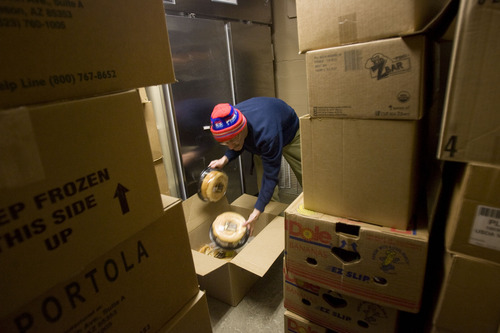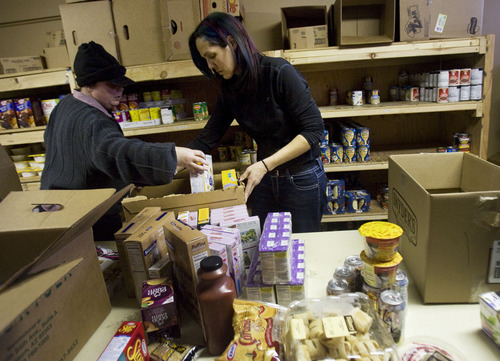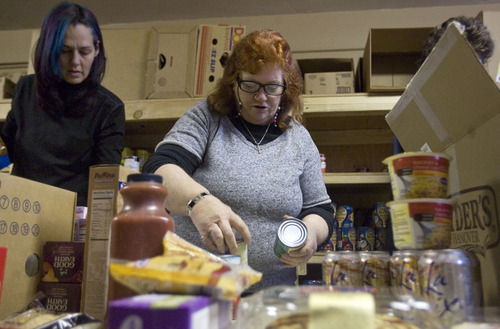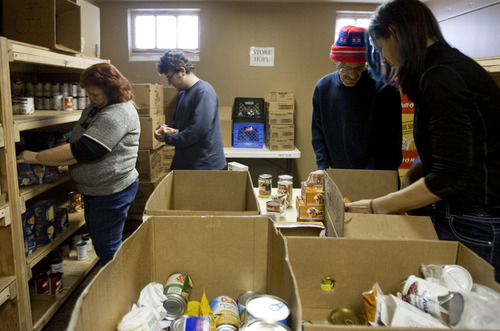This is an archived article that was published on sltrib.com in 2013, and information in the article may be outdated. It is provided only for personal research purposes and may not be reprinted.
Utah racked up a remarkable record of generating thousands of jobs last year, but a sad fact continues to persist in every corner of the state.
It's still pretty darn hard to find a job.
Employment probably jumped 3.3 percent last year. Doesn't sound like much, but that's above the long-term 3.1 percent average dating to the early 1950s. And it's more than twice as fast as the plodding U.S. pace, which month after month in 2012, never did better than 1.4 percent.
But here's the rub. Although Utah has recouped the 80,000 jobs lost since the recession started late in 2007, the labor force has grown by at least 100,000 people, thanks to the state's high birth rate and in-migration rate.
What's more, the composition of the labor market has changed. Some sectors — male-dominated construction and manufacturing, notably — haven't recovered to pre-recession levels, while other sectors — such as education and health care, where women have a commanding presence — never lost jobs, and in fact added them.
Across 14 industrial sectors tracked by the Utah Department of Workforce Services, seven have increased employment since 2007 and seven have lost jobs.
"It's easier [to find a job] than last year, or the year before, or the year before that. But it's certainly not as easy as it was in 2006 and 2007, and it's not easier than it normally is," said Mark Knold, the department's chief economist.
Economists initially believed that Utah regained all the lost jobs in September. That's been revised to December. But trying pinpoint the precise time may be pointless. What is important is this: Jobwise, Utah is back only to where it was when the recession began, which is something that Karen Sendelback, CEO of the Utah Food Bank, notices every day.
The food bank tracks the number of meals it provides rather than counting individuals. By that measure, the economy is still struggling. Last year, 28.6 million meals were served to clients. But instead of falling as the job market strengthened, the number was up. The food bank served 26 million meals in 2011.
"Right now, there is no evidence [that the labor market has returned to normal] in terms of what we are seeing," Sendleback said. "As the signs of the improving economy were there, we were hopeful, but that hasn't been the case."
Dale Cox, president of the Utah AFL-CIO, hasn't noticed an extensive recovery, either. Many of the new jobs that his 30,000 members might qualify for are entry-level positions. What's more, a lot of better-paying construction jobs disappeared when labor-intensive projects such as the 1-15 interstate rebuild in Utah County and construction of the City Creek development in downtown Salt Lake City wrapped up.
"It's difficult to get a job that you can support your family with," Cox said.
Twitter: @sltribpaul —
Job growth in Utah
There was only one month in 2012 when the number of jobs generated by Utah employers wasn't at least 3 percent higher than in the same month of 2011.
January • 2.8 percent
February • 3 percent
March • 3.2 percent
April • 3 percent
May • 3.6 percent
June • 3.6 percent
July • 3.6 percent
August • 3.8 percent
September • 3.6 percent
October • 3.4 percent (estimate)
November • 3.4 percent (estimate)
December • 3.4 percent (estimate)
Long-term average • 3.1 percent















